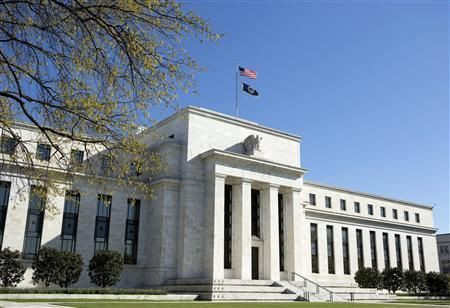July Job Gains May Favor September Interest Rate Rise

WASHINGTON (Reuters) - The number of U.S. jobs probably rose at a healthy pace in July and wages likely rebounded in data due on Friday, providing further signs of an improving economy that could allow the Federal Reserve to raise interest rates in September.
A Reuters survey of economists forecast U.S. nonfarm payrolls increased by 223,000 last month, matching June's job gains, a number which would be slightly above the monthly average for the first half of the year.
Though the pace of hiring has slowed from last year, it remains double the rate needed to keep up with population growth. The Labor Department will release its closely watched employment report on Friday at 8:30 a.m. (1230 GMT)
"We expect this report to deliver a further jolt to the Fed's confidence in their relatively optimistic economic outlook and further solidify the bias for a September hike," said Millan Mulraine, deputy chief economist at TD Securities in New York.
The Fed last month upgraded its assessment of the labor market, describing it as continuing to "improve, with solid job gains and declining unemployment."
There is, however, a lot of uncertainty surrounding July's payrolls forecast after data vendor ADP this week reported a sharp slowdown in private sector hiring last month, even though a gauge of services sector employment from the Institute of Supply Managementhit a 10-year high.
WAGES SEEN RISING AGAIN
Average hourly earnings are expected to have increased 0.2 percent last month after being flat in June, putting them about 2.2 percent above their year-ago level, but leaving them well below the 3.5 percent growth rate economists associate with full employment.
Still, the rise in wages would support views that a sharp slowdown in compensation growth in the second quarter and in consumer spending in June were temporary.
Wage growth has been disappointingly slow in recent months, but falling unemployment and decisions by several state and local governments to raise minimum wages have fueled expectations of a pickup.
In addition, a number of retailers, including Walmart, the nation's largest private employer, Target and TJX Cos have increased pay for hourly workers.
NEARING FULL EMPLOYMENT
The unemployment rate is forecast to hold steady at a seven-year low of 5.3 percent, near the 5.0 percent to 5.2 percent range most Fed officials think is consistent with a steady but low level of inflation.
But an expected rebound in the labor force participation rate, or in the share of working-age Americans who are employed or at least looking for a job, from a more than 37-1/2 year low could push it up.
A labor force drop that economists pinned on a seasonal quirk accounted for a 0.2 percentage point decline in the jobless rate in June.
A good employment report would add to robust July automobile sales and service industries data by suggesting the economy continues to gather momentum after growing at a 2.3 percent annual rate in the second quarter.
"We continue to see signs that the U.S. economy is slowly, but surely gaining traction," said Bryan Jordan, deputy chief economist at Nationwide in Columbus, Ohio.
Employment gains in July are expected to have been concentrated in service industries.
Construction sector payrolls likely rose also thanks to a strengthening housing market, and factory employment will probably get a lift as some automakers have decided to forgo a usual summer plant shutdown for retooling.
But more layoffs in the energy sector, which is grappling with last year's more than 60 percent decline in crude oil prices, were probably a drag on mining payrolls.
Oilfield giants Schlumberger and Halliburton, two big oil service companies that plan to merge, disclosed last week that they had cut 27,000 jobs between them this year. Nearly 50,000 energy jobs have been lost in the past three months on top of 100,000 employees laid off since oil prices started to tumble last autumn, according to Graves & Co., aHouston energy consultancy.
© Copyright Thomson Reuters 2024. All rights reserved.





















